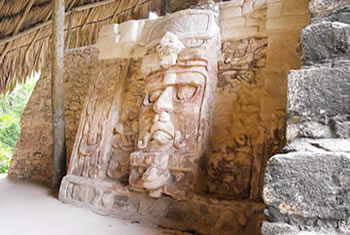Kohunlich
Kohunlich Archaeological Site
Kohunlich is the name of a Mayan city and ceremonial center located approximately 40 miles from Chetumal, Quintana Roo, in the Rio Bec region. It is very close to the Mexico-Belize border.
Hitorical Overviews
The site is located in a hilly area filled with cohune palms, a species native to the southern Yucatan Peninsula and the Petén region of Belize and Guatemala. It was named after this geographical feature, because the name Kohunlich stems from the English Cohune Ridge (where cohune palms grew), an old lumber camp that operated there during the 1920s and 1930s. Raymond Merwin, an American archaeologist who visited it for the first time in 1912, named it Clarksville, alluding to the name of the other camp that operated nearby. The settlement is located in an area where a flat landscape combines with underground drainage and a hilly region with ridges, small ravines and creeks. It is made up of residential units and both civic and ceremonial architectural complexes. They are surrounded by fertile land used for cultivation that extend over 8 square miles. Kohunlich was first occupied during the late Preclassic period (300 BC. - 250 AD), when low platforms were built around the Ya’axná Plaza. These constructions were covered by monumental buildings during the Early Classic period. The Temple of the Masks was built during that period. It is decorated by eight carved figures in red and black polychrome stucco, within masonry frames. Today, only five remain. Its iconography features royal figures dressed in symbolism related to the sun.Kohunlich reached its peak population during the Late Classic period (600-900 AD), during which the majority of the structures that are visible today were built. They include the Plaza of the Stele and the Complex of Roads (civic-ceremonial complexes), the Northeastern Group, the late structures of the Pixa’an Group, and the Group of the 27 Steps (both residential complexes for the elites). The settlement continued to grow until the early Post-classic (1000-1200 AD). During this epoch, the Maya placed offerings of incense in the temples and prepared rooms and platforms around the main buildings or in the residential complexes.


